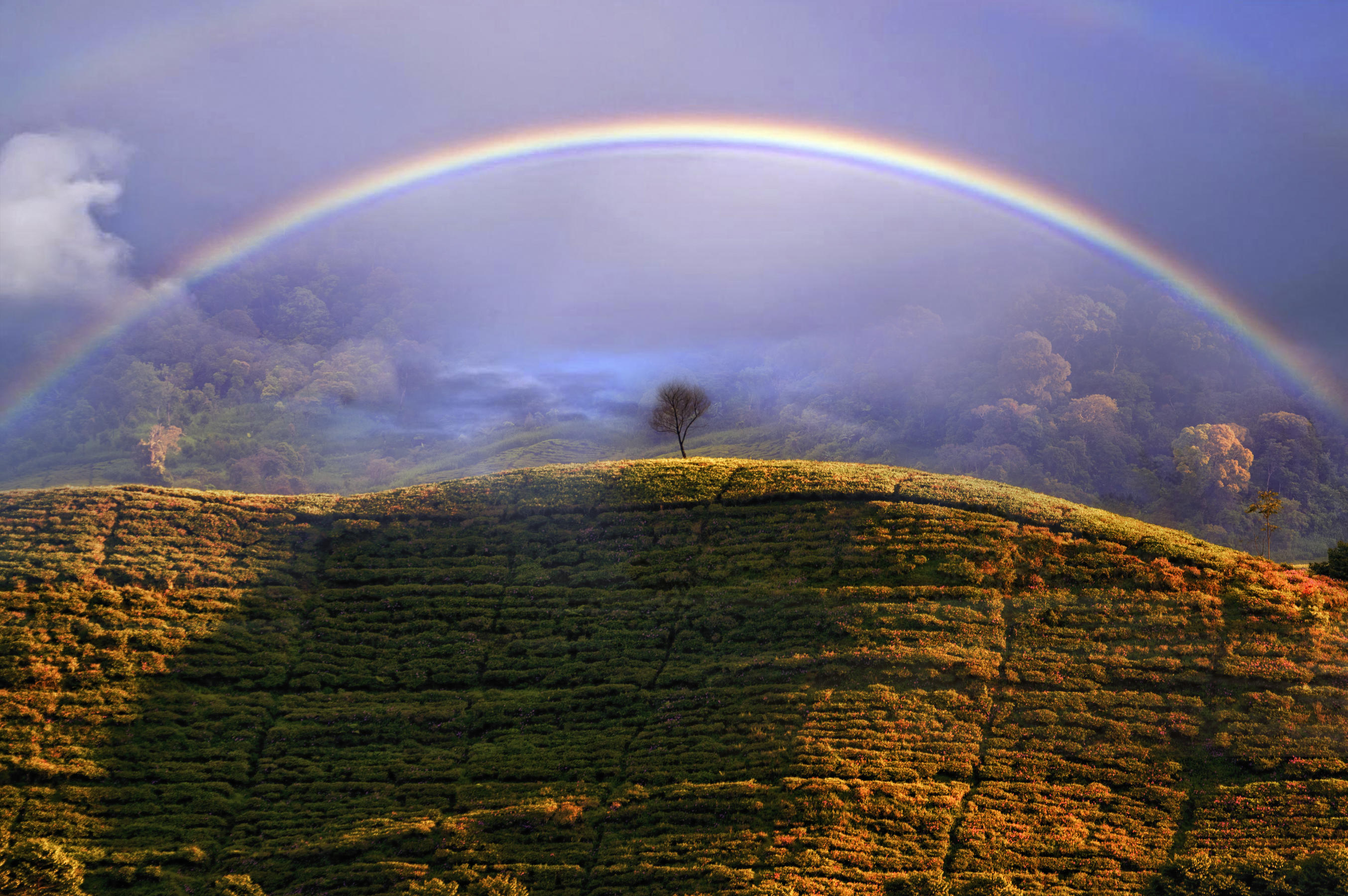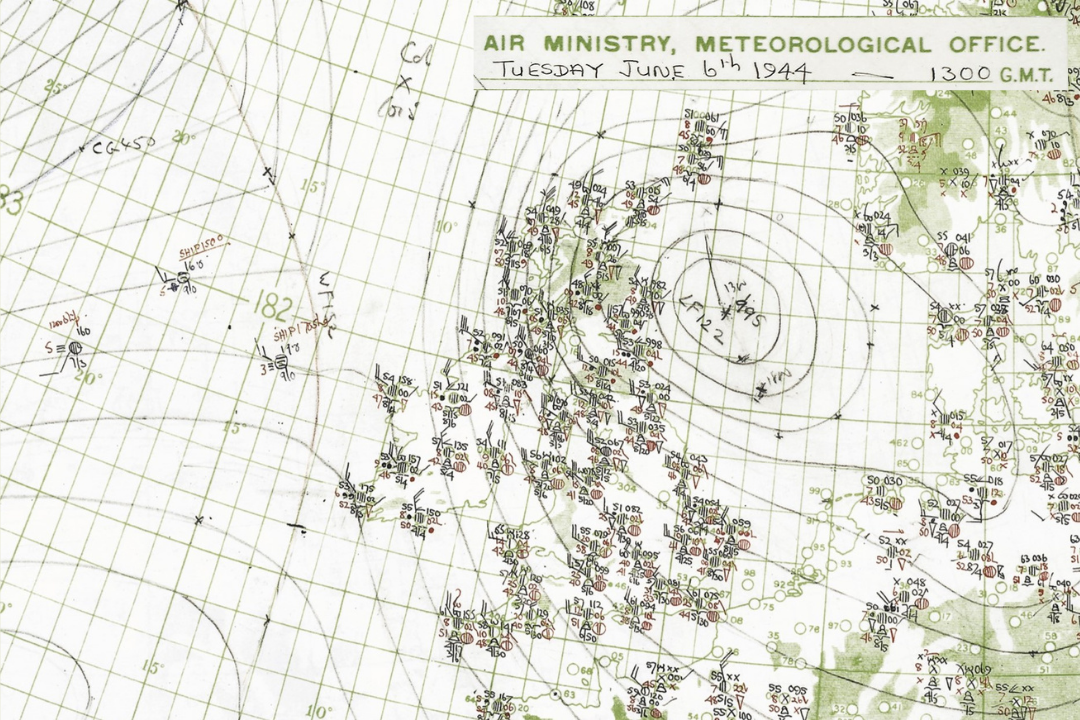

Weather Photographer of the Year 2022: Behind previous winning images – rainbows
by Kirsty McCabe, FRMetS
One of the most popular and regularly spotted optical phenomena is the rainbow. This colourful arc in the sky has been the subject of previous entries to Weather Photographer of the Year.

Rainbows form due to the refraction, or bending, and reflection of sunlight as it passes through raindrops. This process splits visible light into its seven component colours, which we see as the rainbow. Dani Agus Purnomo captured this ‘Misty Rainbow’ (above) among tea fields in Tangerang, Indonesia.
And they don't just form when it rains. Sometimes spray from a waterfall, a fountain or even fog will do the trick. Fog can produce an optical phenomenon called a fogbow. To see a fogbow you need mist, fog or cloud, and for the sun to be behind you at a low angle in the sky. Fogbows form in the same way as their cousin the rainbow, but they are almost colourless due to the tiny size of the water droplets.

Pete Scott has photographed Corfe Castle in Dorset in the mist hundreds of times before, but this was the first time he captured a fogbow using his drone.

Melvin Nicholson also captured a fogbow or ‘White Rainbow’ as the rising sun burned off the mist over a snow-covered Rannoch Moor in Scotland. He used a polariser to bring out the dark band under the fogbow and the colour in the sky above.
So how do rainbows form? Here's our MetMatters guide
Rainbows form when sunlight falls on water droplets. Some of the light gets reflected off the water drop while some enters the drop, bounces off the back and passes back out the drop again, towards us. Because water is more dense than air, light passing into the drop slows down and changes direction in a process known as refraction.
Sunlight is actually made up of a spectrum of different colours, and as it enters the water drop it is split into its component colours. Each colour is refracted, or bent, by different amounts depending on its wavelength, with the shorter wavelengths (violet and blue) slowed and bent more than the longer wavelengths (orange and red).
The light then bounces off the back of the water droplet, is reflected back towards us and as it exits the droplet it is refracted again, dispersing the colours even more. Blue light emerges at a smaller angle than the red light, which is why we see blue on the inside of the rainbow and red on the outside. In other words, the differences in wavelength dictate the order of colours in our rainbow.
To see a rainbow the sunlight must hit the water drop at just the right angle, normally when the sun is shining behind you and low in the sky. This is why rainbows are normally seen in the western sky during the morning and to the east in the evenings.
A rainbow's shape is actually a circle centred on the point directly opposite the sun from you - the anti-solar point - with an angular radius of 42 degrees. For the really keen, rainbows technically form a cone shape but as we only see it as a circle let's stick with that.
Most of the time we can't see the full circle because the earth gets in the way. The closer the sun is to the horizon, the more of the circle we see. Right at sunset, we would see a full semicircle of a rainbow with the top of the arch 42 degrees above the horizon. The higher the sun is in the sky, the less of a rainbow is visible above the horizon. The higher you are, say on top of a mountain or in a plane, then you might see the whole circle.
Because the position of a rainbow is centred on the anti-solar point and that is determined by your position, everyone sees their own personal rainbow. As you move, so does the bow, making it impossible to reach that pot of gold. Of course, with a circular shape there isn't an end to the rainbow anyway as it only appears to touch the ground.
Double the luck
Sometimes more than one rainbow is visible, with a second fainter rainbow visible outside the main one. This secondary rainbow is formed by rays of light that have been reflected inside the rain drop twice - most likely due to irregular shaped water droplets. The extra reflection means the colours in the secondary rainbow are in the opposite order.

Our runner up in the 2021 Mobile Phone category, Susan Kyne Andrews, was walking her cockapoo Evie on Greystones South Beach in County Wicklow, Ireland, when the heavens opened. She snapped this beautiful double rainbow on her phone.
Colourful shot
So the next time you hear the phrase "sunshine and showers" during a weather broadcast, that's your cue to get your camera and go hunting for rainbows. And if you capture one (or more) on camera, we'd love to see it. Enter the Royal Meteorological Society's 'Weather Photographer of the Year' competition - it's free and open to photographers, professional and amateur, of all ages and abilities.
'Weather Photographer of the Year', in association with AccuWeather, attracted almost 9,000 photos last year, seen by millions of people across the world, and there are some great prizes on offer as well as bragging rights of course!
This year's line-up of judges includes experienced meteorologists, photographers and photo editors, including Serge Zaka, winner of the public vote for his storm over Cannes Bay.
The judges will look for images that combine photographic skill with meteorological observation and storytelling. To discover the audience favourite, shortlisted entries in the main and mobile competitions will also be put to a public vote in August and September.
What are you waiting for? Get snapping!



